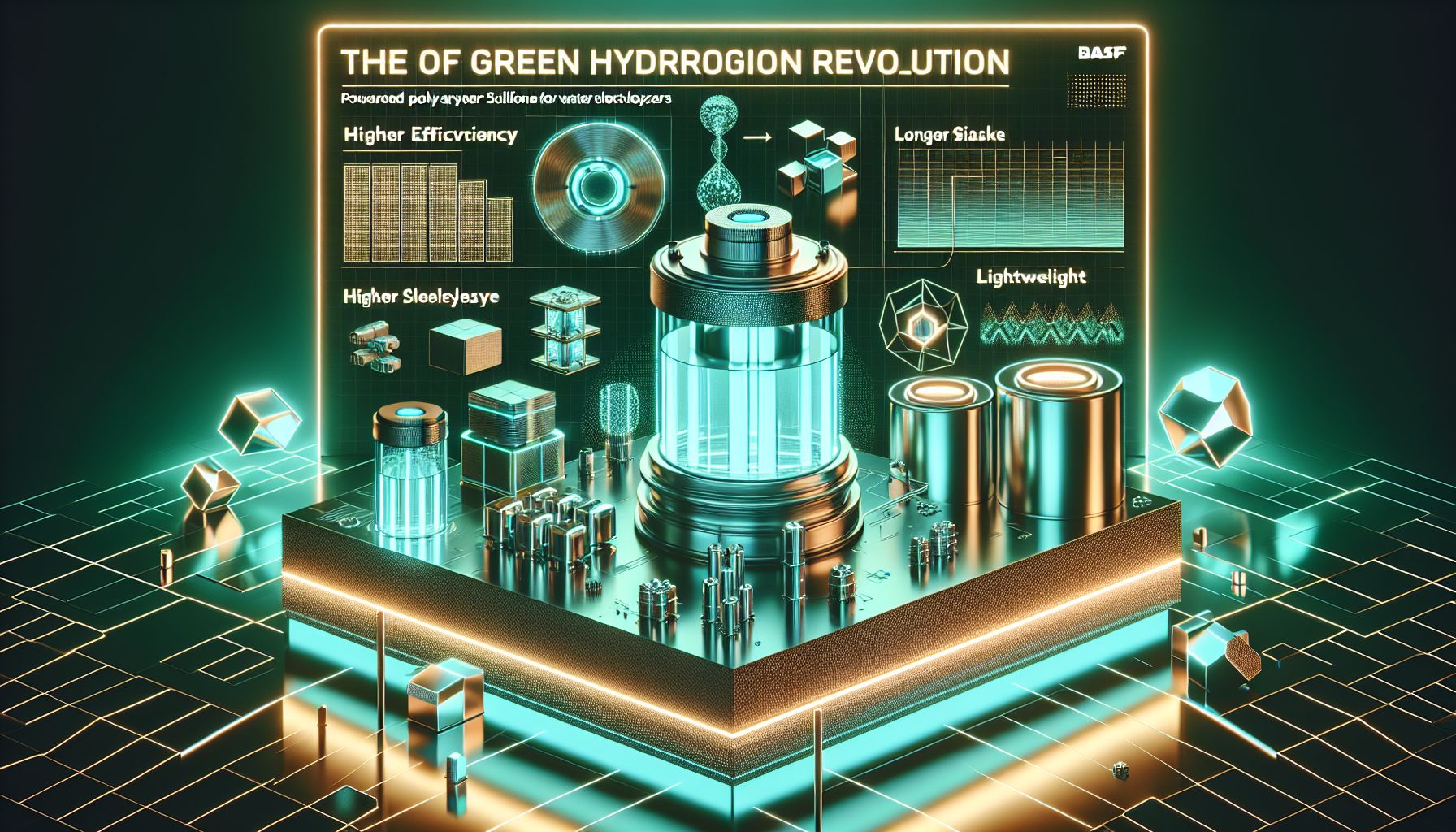BASF's Ultrason®: Powering the Green Hydrogen Revolution

Ludwigshafen, Thursday, 10 October 2024.
BASF unveils groundbreaking Ultrason® polyarylethersulfones for water electrolyzers, boosting green hydrogen production. This innovation promises higher efficiency, longer lifespan, and lighter components. BASF’s 30-year expertise backs the transition to clean energy, making complex tech accessible and impactful.
Unveiling the Potential
I find it fascinating how BASF’s Ultrason® is setting the stage for a green hydrogen future. Imagine a world where electrolyzers are not just efficient but also durable and lightweight, thanks to advanced materials like polyarylethersulfones. This isn’t just a technological feat; it’s a leap towards a sustainable future. BASF’s new partnership with the energy sector is all about making this a reality, using a tailored portfolio that enhances electrolyzer performance and supports the global shift to green energy[1].
The Role of Ultrason®
What really grabs my interest is how Ultrason® can withstand temperatures up to 120 °C while offering exceptional chemical resistance. These attributes are vital for the high-purity separator membranes in water electrolyzers, used in various types like alkaline, proton exchange membrane, and anionic electrolyte membrane electrolyzers[1]. The impact? Greater design flexibility and reduced weight compared to traditional metal components, making it easier to scale up hydrogen production efficiently[1].
A Spotlight on Innovation
BASF is showcasing this remarkable technology at Fakuma 2024 in Germany. It’s a chance for visitors to witness firsthand how Ultrason® transforms electrolyzer components. This isn’t just about displaying innovation; it’s about demonstrating commitment to a cleaner, greener planet. Erik Gubbels from BASF emphasizes that their experience in plastic processing and membrane production is integral to helping companies develop parts that operate at higher temperatures with longer lifespans[1].
Global Impact and Future Prospects
The global push for renewable energy is undeniable. IEA reports suggest that renewables could meet nearly 50% of global electricity demand by 2030, though challenges remain[2]. In this context, BASF’s initiative is pivotal. Their expertise not only supports the energy sector in upscaling electrolyzer technology but also aligns with broader sustainability goals. This synergy is crucial as industries worldwide pivot towards reducing carbon emissions and embracing cleaner energy solutions[3].
Conclusion: A Step Towards Sustainability
As I see it, BASF’s commitment to advancing green hydrogen technology through innovations like Ultrason® is a promising step toward a sustainable energy landscape. This isn’t just about new materials; it’s about paving the way for a cleaner, more efficient future. With the right support and continued innovation, green hydrogen could become a cornerstone of the global energy supply, transforming industries and reducing our carbon footprint[1]. What do you think? Could this be the spark that ignites a broader green revolution?